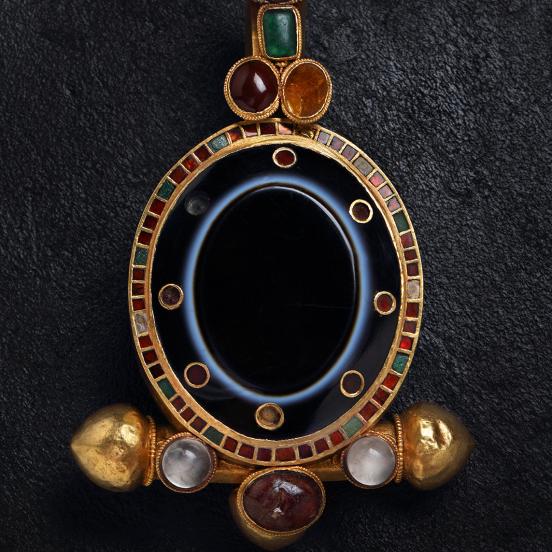Imperial fibula with onyx, Szilágysomlyó
In 1889 a very special object was discovered as part of a treasure hoard in Szilágysomlyó in the northern part of the Apuseni Mountains of Transylvania – a Roman imperial fibula (a brooch for clasping garments) made in the 4th century. Such gold fibulae decorated with enormous gems and worn as insignia were used exclusively by emperors and their male family members. Up to the present day, the jewel from Szilágysomlyó is the only existing known imperial fibula; apart from this one, similar objects are known only from contemporary representations. The chief ornament of the gold fibula weighing nearly half a kilogram is a perfectly cut, oval onyx. In addition, rock crystal, carnelian and coloured glass were also used to decorate it. It was made in a workshop of Rome, but presumably in the second half of the 4th century the Roman emperor may have presented it to a barbarian ruler on a special occasion or in tribute for his merits; that was how it must have got to the location where it was found, beyond the borders of the Empire.

